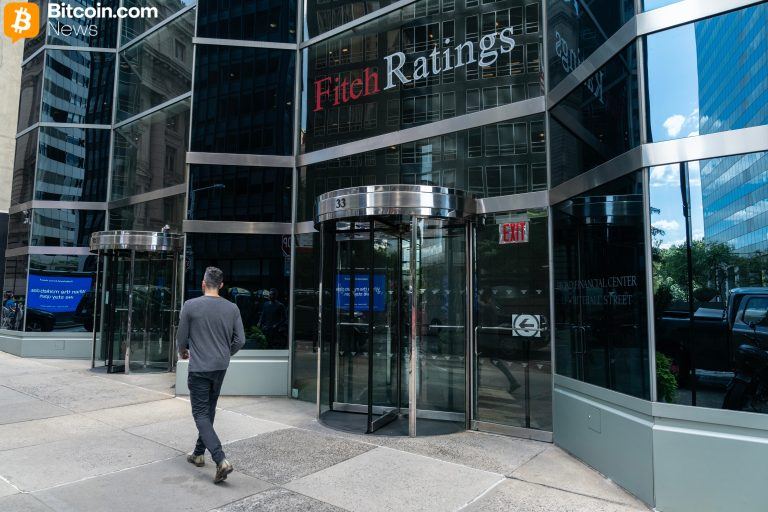The mysterious, massively lucrative, multibillion-dollar ARKK trade
6 min read

Earlier this month something very weird happened with Cathie Wood’s flagship actively-managed fund, the ARK Innovation ETF.
Take a look at this wild chart of its assets under management:
The fund (known by its ticker ARKK) mysteriously saw its AUM suddenly balloon from $7.1bn on August 8 to $12.8bn on August 14, before swiftly falling back to $7.2bn on August 20. It’s now resting fairly steady at ca $7.5bn. So what caused this massive and sudden inflation and deflation of ARKK?
ETF.com reckons that it was a huge “heartbeat trade”, an old trick that ETF managers pull to limit capital gains tax bills. This involves pushing money into an ETF and almost immediately redeeming it in the form of shares, which are then sold.
We’re not convinced. The pattern of massive inflows and outflows does look a little like an ETF heartbeat trade. But heartbeat trades tend to be two-day things — in and out — not things that happen over several days. The timing is also . . . curious.
So what actually happened?
We’re speculating, but FT Alphaville wonders it was actually a funky and extremely profitable trade related to the initial public offering of the Peter Thiel-backed cryptocurrency exchange Bullish on August 13.
On August 4 Bullish revealed in an SEC filing that BlackRock and Cathie Wood’s ARK Investment Management had each indicated an interest in buying up to $200mn worth of shares in its IPO. On August 11, Bullish said in a new filing it was increasing the size of the offering because of the strong demand. By the end of that Monday, Bloomberg reported that bankers on the deal had stopped taking orders even for the enlarged deal, which was set to begin trading on Wednesday, August 13.
Allocations to hot IPOs are often extremely sought after, as a first-day pop can hand investors a quick profit. That is particularly true when the stock is likely to catch the attention of retail investors — such as Bullish’s own users — who usually have no way of acquiring shares in or ahead of the IPO, and have to wait until it begins trading to grab what they can.
Even big institutions often struggle to snag the shares they want, and the Bullish IPO was reportedly over 20 times oversubscribed — making any allocation extremely valuable.
However, a funky arbitrage at the heart of the ETF mechanism opened up an avenue for someone to stealthily engineer indirect exposure to the Bullish IPO.
Most investors that want exposure to an ETF simply buy its shares, just like any stock. But there’s also a process known as “creation and redemptions” that ensures that the value of the ETF constantly reflects the value of its underlying stocks. If the ETF is overvalued you can buy all the cheaper constituents, hand them to a specialised ETF market-maker known as an “authorised participant” and get shares in the ETF. If the ETF is undervalued compared to its holdings, you can ask the authorised participant to redeem your shares for a slice of the underlying holdings, and sell them off.
This is what appears to have happened with ARKK in mid-August. Anticipating that the IPO would enjoy a massive pop and hand an immediate windfall for ARKK, it looks like someone quietly spent billions of dollars on shares that replicated ARKK (minus Bullish) to create a whopping 68.8mn shares in the ETF.
On Aug 13 — the day of the Bullish IPO — this someone in practice represented about 41 per cent of all of ARKK’s shares outstanding. That made them by far the biggest owner of ARKK, holding far more of the ETF than the next 10 biggest owners combined.
That day, ARK also revealed in a standard trade notification that it had in fact acquired 2.53mn shares in Bullish across three of its actively-managed ETFs — most of which was parked inside ARKK — at the IPO price of $37.
Then, after Bullish had soared 83 per cent to $68 on its first day of trading, the money began to gush out of ARKK again as someone redeemed shares just as aggressively as they had created them. The ETF’s shares outstanding peaked at 166.5mn on August 13, and fell back down to 114.3mn on August 15.

Put a bit more simply and succinctly, it looks like someone in practice managed to finagle a large synthetic allocation to the Bullish IPO by aggressively creating shares in ARKK. And once the windfall materialised they immediately redeemed those shares to crystallise the gain, sending ARKK back to earth.
How much did they make? This is very back-of-the envelope stuff, but Bullish jumped from the IPO price of $38 to close at $68. ARKK received an allocation of 1.714mn Bullish shares, so it made a swift $51.4mn profit on the day of the IPO.
Assuming that our mystery trader accounted for all the 68.8mn shares created in the days leading up to the IPO, it means they would have made — very roughly — $21.2mn over a couple of days. Nice.
So who could it be?
Unfortunately, Alphaville hasn’t been able to find that out. And we should stress again that this is just our theory for what happened. But would probably have to be a very large, sophisticated and daring investor — or possibly a small club of investors.
After all, this was not a riskless trade. Although the IPO did look like it would trade well, there was no guarantee that the price would pop the way it did. Indeed, Bullish fell back to a low of $57.9 on August 19, and at pixel time is trading at about $64. That’s obviously still well above its IPO price but down from its first close and the peak of $118 it hit on the first day of trading.
And the size of the trade was humongous. ARKK’s assets peaked at $12.83bn on August 14, but by then the share count had already begun to contract, so the best proxy for how much was spent is probably the $2.9bn its assets grew by on Aug 11-12, when share count was ballooning.
Moreover, ARKK is a very volatile ETF, so ploughing several billion dollars into it even for a few days is pretty ballsy. A big drop in something like Tesla (over 11 per cent of the fund) could conceivably have wiped out any profits from the Bullish IPO.
Plus, it looks like there were similar short-term trades happening in two other smaller ARK ETFs that also got some allocations to the Bullish IPO — the ARK Next Generation Internet ETF (ARKW) and the ARK Fintech ETF (ARKF). The size and multiple distinct legs of the trade implies that it was someone big, clever, and ballsy doing it.


Does all this matter? Well, the main obvious losers from all this were pre-existing ARK investors, whose stakes in Bullish and subsequent windfall from the IPO were diluted.
Because of the ETF creation-redemption mechanism, they saw someone barge in to the feast they were about to enjoy, scoff down a lot of the food, chug the wine and then suddenly disappear without even a thank-you. The size and violence of the money flows might also have had a knock-on impact on some of the underlying stocks in ARKK, especially smaller ones where Cathie Wood’s ETF is a particularly large shareholder. We reached out to ARK Invest to get their thoughts but haven’t heard back from them.
However, Alphaville is particularly interested in this case because of the ongoing ETFisation of markets and the consequences that flow from that.
This ARK-Bullish situation is a pretty unique case — most ETFs are passive funds that don’t partake in IPOs — but as they continue to grow in size and funkiness they are going to leave increasingly large and complex footprints on financial markets. Some people will bemoan that, while others will try to profit from it.







